Nestled in the
foothills of the
Blue Ridge
Mountains is
Rappahannock
County,
Virginia.
Just a two-hour drive from Washington, DC, this rural community of 7,400 sits along an imaginary border dividing rural America from the more densely populated suburban and urban communities of the eastern seashore.
Rappahannock County was named after the Rappahannock, one of many indigenous American tribes conquered during the creation of the colony of Virginia. In 1749, a teenage George Washington surveyed the county seat. As a result it was the first American town to adopt the president’s name as its own. During British colonial rule, the county’s land was distributed among landed gentry by Lord Fairfax. African slaves built the colonial estates and worked in the orchards that still dot the rural hillsides today.
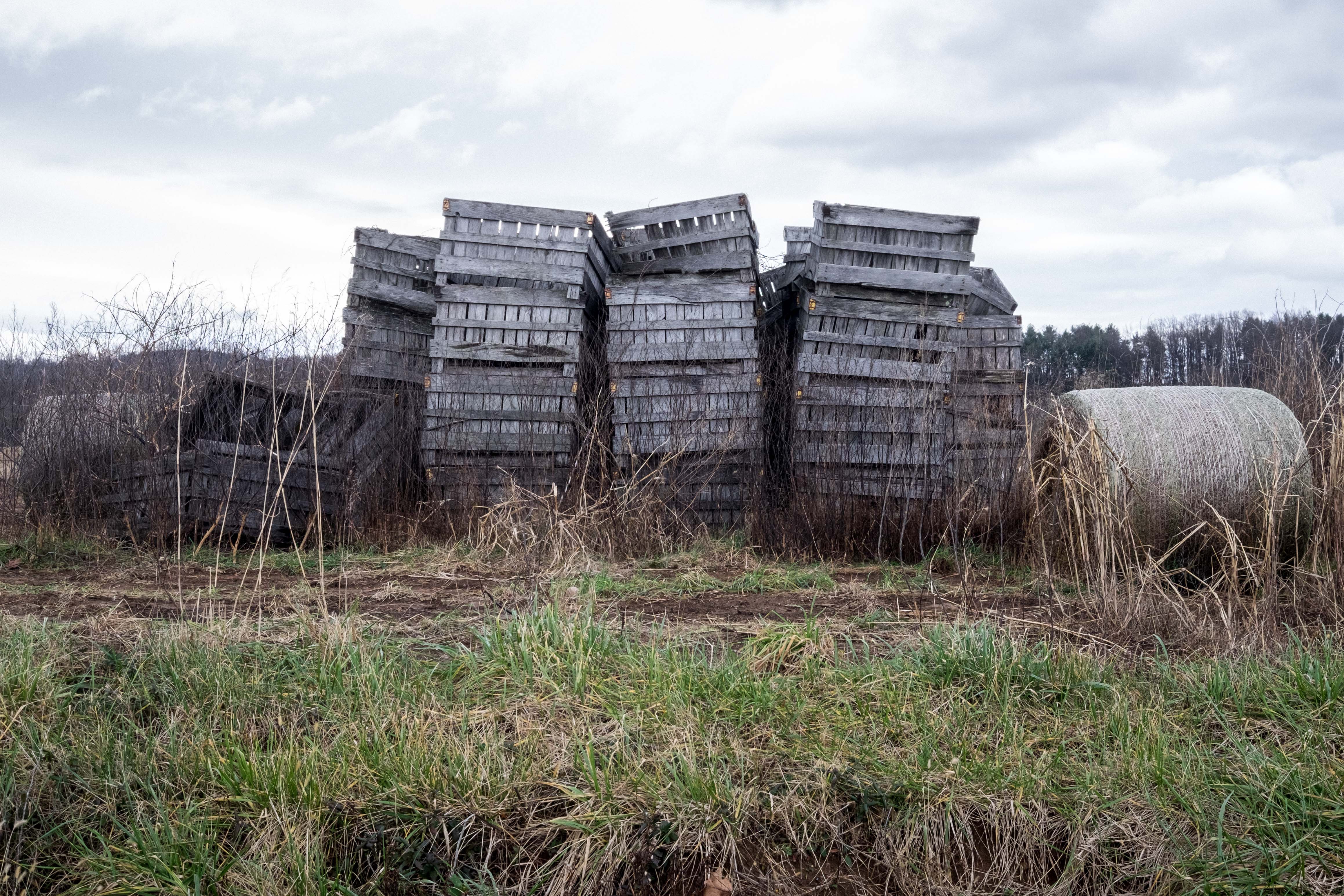
Along the mountainous western edge of Rappahannock, hardworking Scotch and Irish immigrants settled the rocky hollows of what is today the Shenandoah National Park. For more than two hundred years, the descendants of these settlers lived in semi-autonomous communities, hunting in the surrounding forests, farming the hollows, and working in the orchards of the colonial estates in the lowlands to the east.
In 1926, the Shenandoah National Park was authorized by federal and state authorities. A large swath of Rappahannock’s western edge was appropriated for the park. Hundreds of families were pushed off their land and resettled in the county’s lowlands. Wounds from the park’s creation still run deep for the descendants of displaced families. It is often expressed in mistrust of the federal government and the national political establishment.
Peter "Pete" and Sandy Jenkins pose for a portrait in their living room in Flint Hill, Virginia. Pete grew up in what is now the Shenandoah National Park. His family was one of the many families that were bought out through eminent domain and subsequently pushed out of the park. He says life was hard for his family and even harder when they left the mountains. He shot the deer hanging on the wall and brought the rocks for his chimney from the hollows where he grew up.
Orchard boxes sit abandoned along Fodderstack Road. The orchard industry and apples, in particular, used to be one of the county’s economic motors. However, growing land value has forced many farmers to sell off their land.
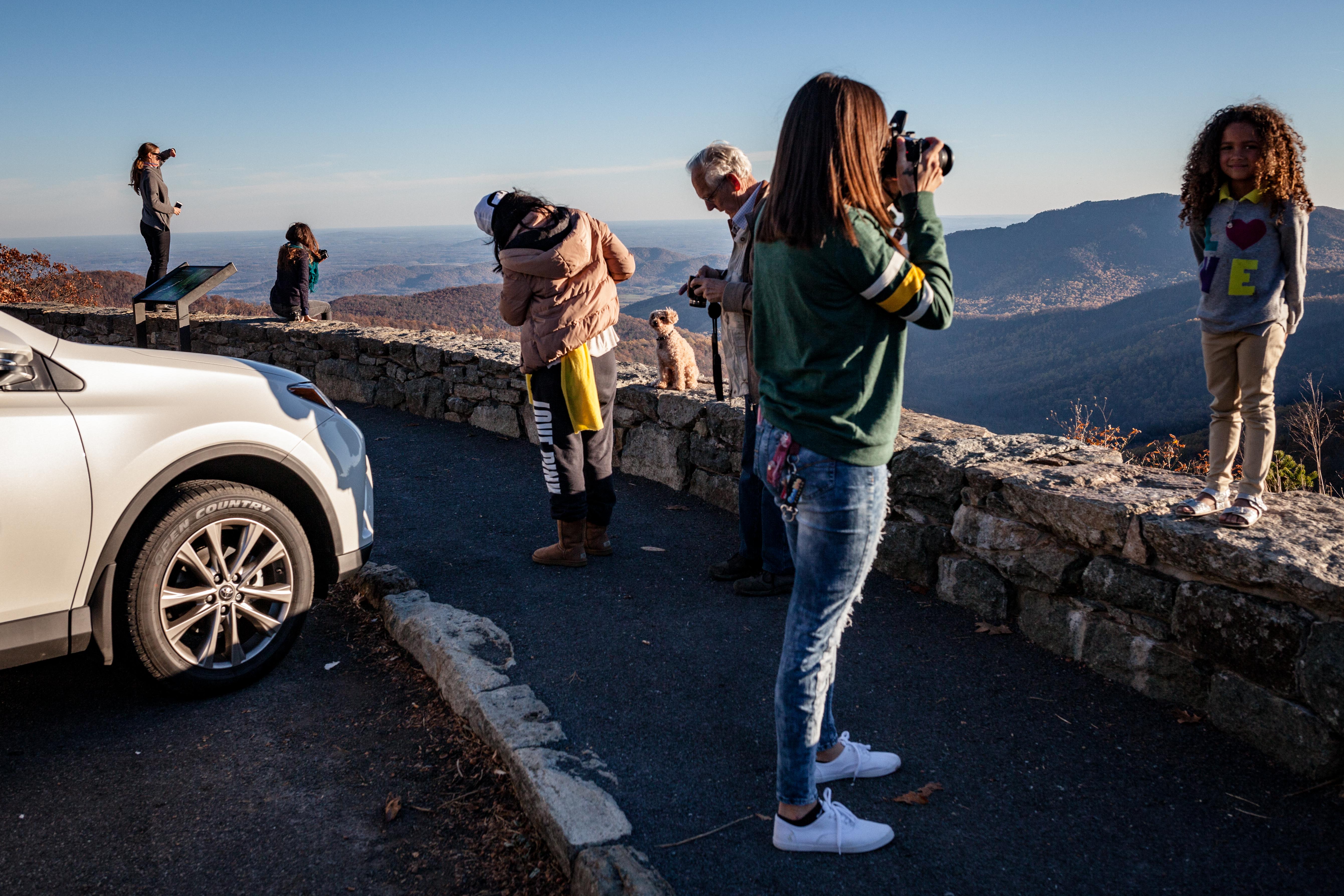
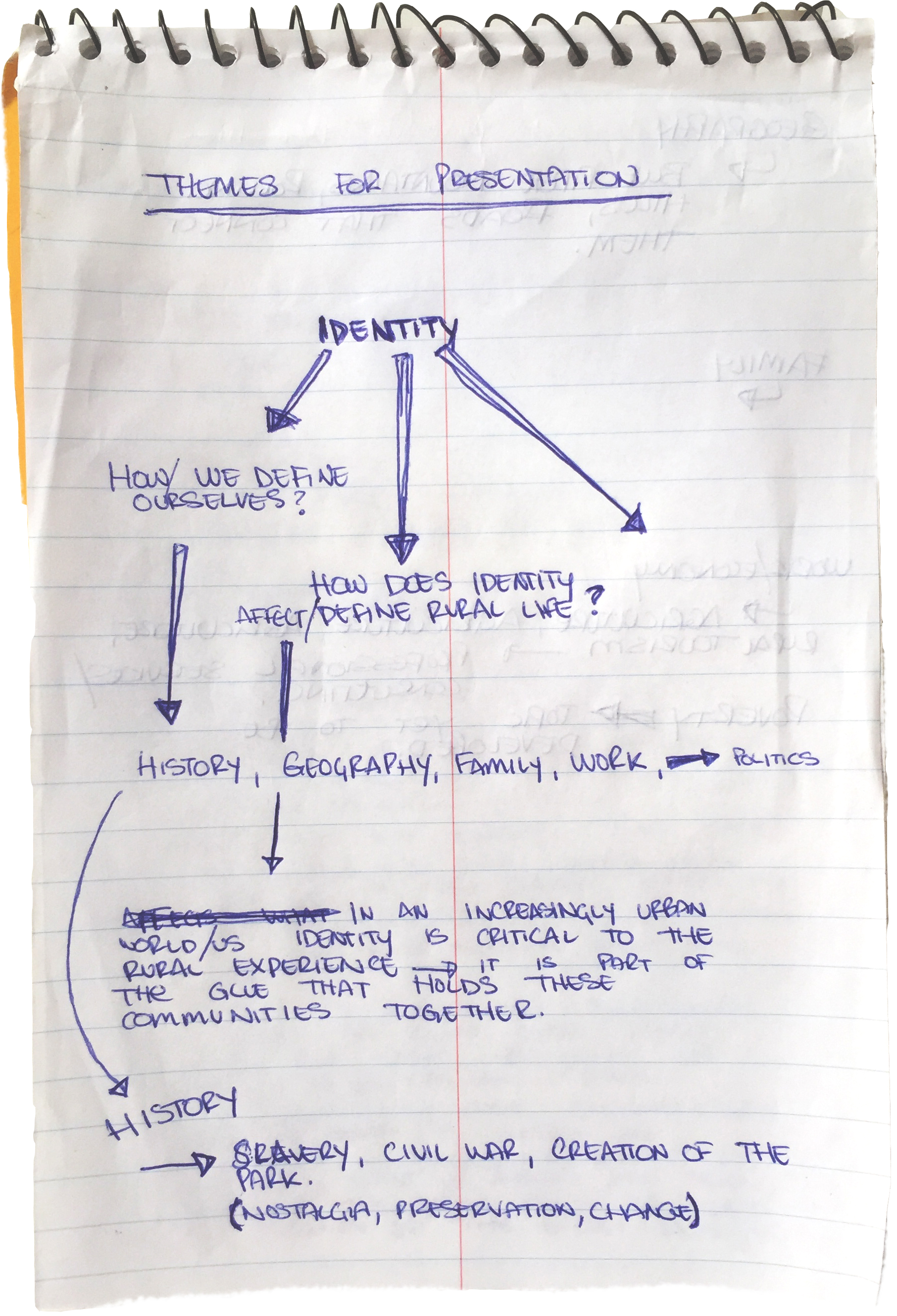
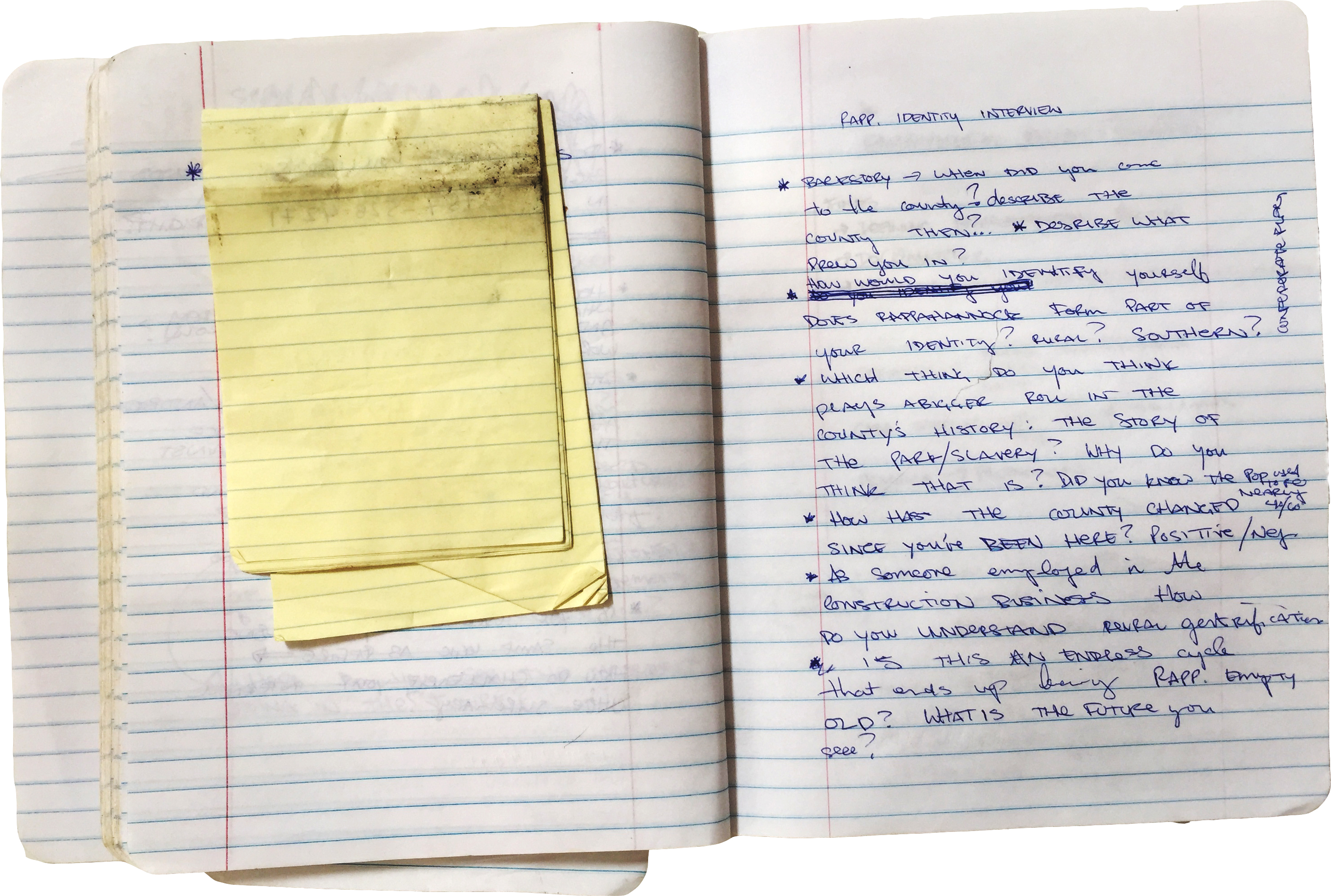
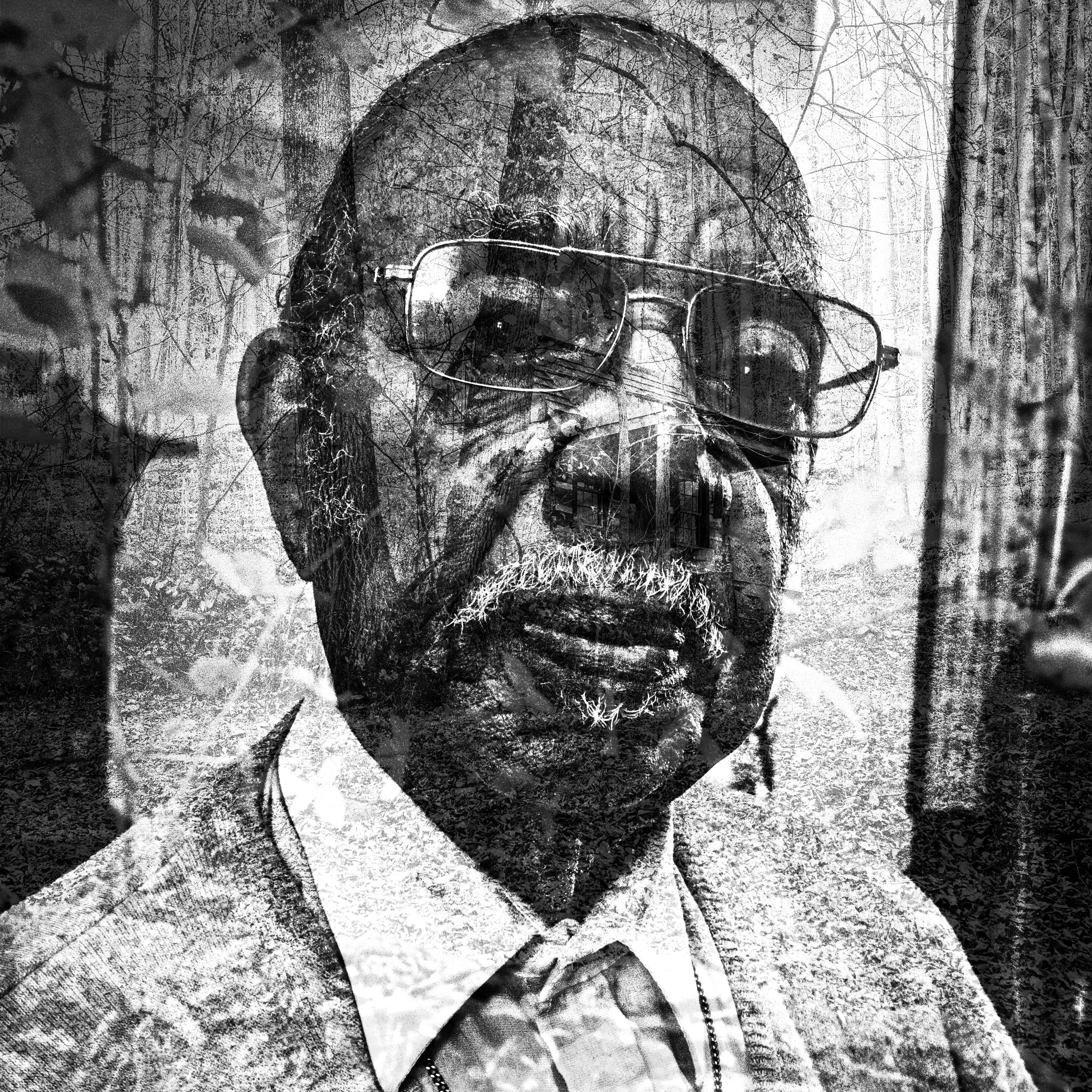
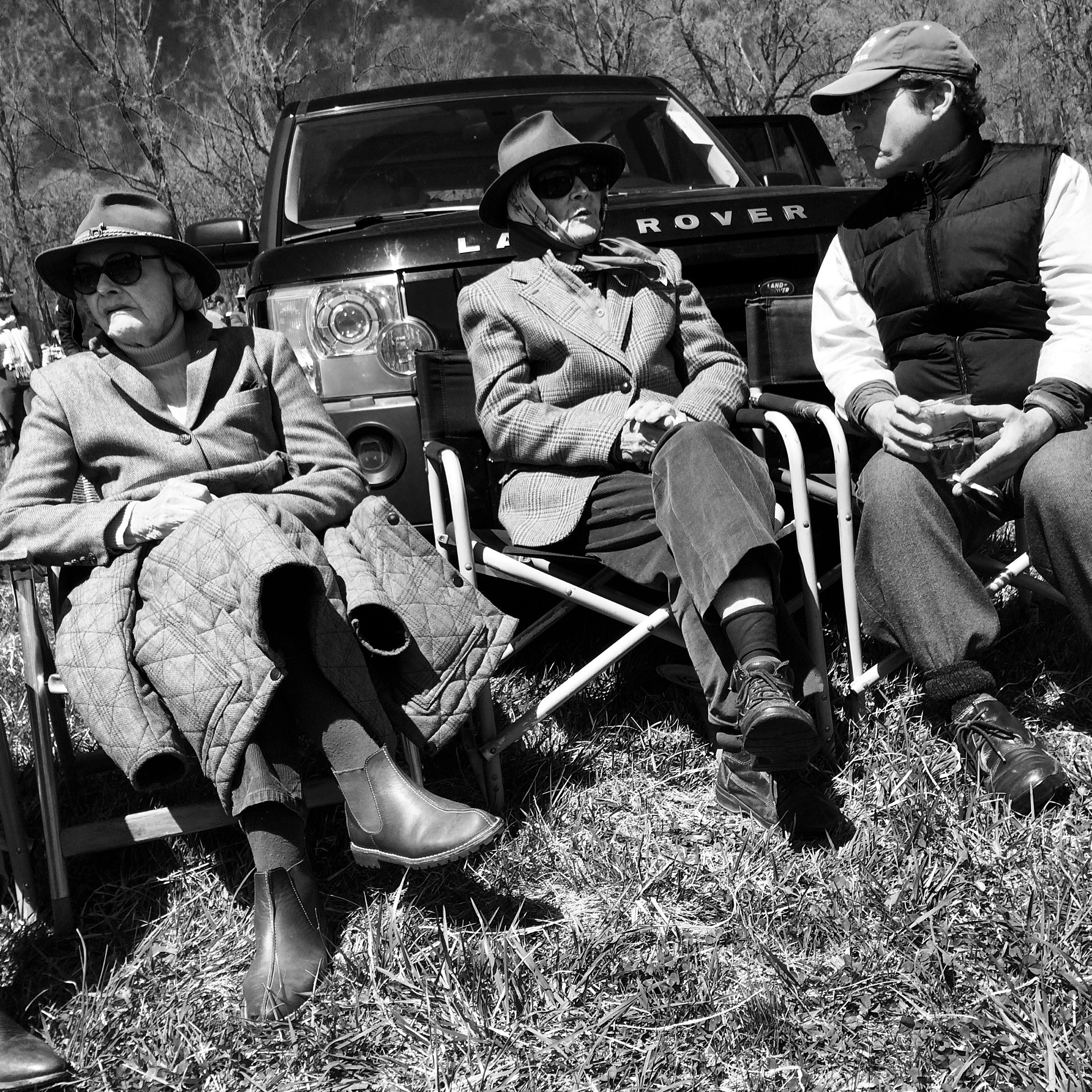
Rappahannock’s rolling hills, beautiful views and proximity to Washington, DC, make it a popular tourist destination. Since the 1980’s professionals and retirees from Washington and New York have been moving to Rappahannock. This influx of outsiders has increased county tax revenue and has steadily improved land values. However, the county’s median income has not grown at the same speed and many working families once again feel they are being pushed out. The county ranks 64th (out of 3,084 jurisdictions) in the nation for income inequality. The agricultural economy that sustained the region is gradually being replaced by rural tourism and other service industries. Simultaneously, progressive social trends popular in more urban areas are challenging the traditional values that once defined the region.
Matt Pflausen catches his breath after helping load a herd of cattle into his cousin Mike Peterson’s trailer. After leaving the restaurant industry, Mike started Heritage Hollow Farm with his wife Molly. They specialize in producing quality grass-fed beef and lamb. While the county’s agriculture is still dominated by larger landowners using traditional farming methods, there is a growing community of young farmers interested in community supported agriculture market models and sustainable agriculture methodology. The proximity of Washington DC’s metropolitan economy and the local niche market of rural tourism has allowed many of these operations to grow. However, the expensiveness of land hamstrings all agriculture in the county and many younger farmers worry about the long-term sustainability of agriculture in Rappahannock.
>>
>>
>>
During the Civil War, Rappahannock and the broader Piedmont region was staunchly Confederate, though the county’s location made it an important thoroughfare for both Confederate and Union troops. In 1900, the United Daughters of the Confederacy commissioned the construction of the Confederate Monument on the grounds of the county courthouse in Washington, Virginia. Today many county residents still fly the Stars and Bars on their properties with pride.
>>
The three slave quarters on the Ben Venue property are some of the most well-preserved slave dwellings in the entire state of Virginia. During slavery, the majority of the slaves were housed in wooden huts and shacks. Over time most of these slave dwellings were destroyed. However, wealthier slave owners sometimes built more permanent slave quarters as a way to demonstrate their wealth.
A woman watches her child ride a merry-go-round at a carnival in Front Royal, Virginia. While not in Rappahannock county, Front Royal is an important economic hub for the surrounding region and the largest nearby town for many Rappahannock residents. Front Royal’s Avtex factory used to employ thousands until it was closed by the Environmental Protection Agency, due to repeated pollution of the regional watershed. The plant’s closure hit the local economy hard, leaving many families struggling to make ends meet.
>>
In 1980 my grandparents, Linda Remington Dietel and William Dietel, moved to Rappahannock County. They fell in love with this rural corner of America. My grandmother started a small sheep farm and my grandfather commuted to New York city via Dulles International Airport. Many of my childhood holidays were spent on the farm. I explored the nearby forests pretending to be on an adventure filled with frontier expeditions. In the pastures, I fought imaginary Civil War battles.
Margaret Settle (mother of Stewart Settle) poses for a photo in the now abandoned Aileen manufacturing plant in Flint Hill, Virginia. Margaret worked at the plant for eight years along with hundreds of other men and women. An important employer for the county, the owners of the Aileen plant moved operations out of the United States in 1994 in search for cheaper labor.
For 37 years, my grandparents have happily called Rappahannock County home. Prejudiced by my “Yankee” upbringing in Pennsylvania and Chicago, calling the country home seemed strange to me. As I've gotten older and started raising my own children, I'm beginning to grapple with and understand my own implicit biases, which have been my motivation for doing this exhibit. Today, I have come to call Rappahannock home, and I look forward to forging my own identity within the hills that have shaped so many before me.
Two men walk across the dance floor of the Front Royal Fire Station auditorium at a wedding for an immigrant couple from Zacateca, Mexico. The majority of immigrants from Mexico in the Piedmont region come from Zacateca, creating a tight-knit community based on their shared Zacatecan identity.
Shadows decorate the siding of an abandoned building on the outskirts of Washington, Virginia. The town was originally surveyed by the country’s first president George Washington and is the county seat. It is also now at the heart of Rappahannock’s upscale rural tourism industry, with the world famous and highly exclusive Inn at Little Washington attracting thousands of visitors annually.
A campaigner for the Republican party of Rappahannock County shows off her flag sweater outside a polling station in Flint Hill, Virginia. She said this was the most important election of her life and immigration is the most important issue of the election.
Jimmie DeBergh poses for a portrait on the balcony of his office. Jimmie’s family has lived in Rappahannock county for generations, and he is tied to the land and the local community. However, the successful businessman who has spent much of his life traveling around the world grudginly admits there is little to keep younger generations in Rappahannock.
WHO WE ARE
A special thanks to the following businesses for their collaboration with the exhibit of this project: Cheri Woodard Realty, Pen Druid Brewing, Rappahannock Cellars, Skyward Cafe, Bean Hollow Grassfed, Clark Land Surveying, Virginia Chutney, Cannon and Sharp Real Estate.
A home on Sunnyside Road in Washington, Virginia.
The “Lunch Bunch” have their men-only lunch at the Public House, a restaurant in Flint Hill, Virginia. The daily gathering is attended by local businessmen, retired Washington lawyers and political insiders who now call Rappahannock home. Just four days before the 2016 presidential election, the focus of a lively debate was the Trump campaign and the potential consequences of a Trump victory.
Amanda Marie Frye grew up in the Blue Ridge Mountains and is tied to the country life of the region. Looking forward to a future in sustainable agriculture, she is honest about the challenge of expensive land costs for young aspiring farmers. Amanda identifies with the confederate flag but says she could never support Trump or the more incendiary political proposals he’s made popular.
Exhibit Details
A cow licks her calf after giving birth on Over Jordan Farm in Flint Hill, Virginia.
Stewart Settle fastens a shaft on a workbench at Settle’s Garage in Flint Hill, Virginia. The garage is owned by Stewart’s cousin “Bubby" and is an important community space for the residents of Rappahannock County. The Settle family was one of many forced out of the mountains during the creation of the Shenandoah National Park.
While Rappahannock’s economy was not built around the large plantations that dominated other parts of the South, African slave labor was an important economic motor. In 1840 more than 40% of the county’s population was of African descent, most of whom lived in bondage. Since emancipation, much of this population has left the county. Jim Crow laws and a lack of jobs caused many to migrate to Washington, DC, Pennsylvania, and Baltimore. Today Rappahannock is more than 90% white.
A Confederate flag hangs out at a roadside apple stand in Sperryville, Virginia. While situated less than two hundred miles from the Mason Dixon line that divided North from South during the Civil War, many in Rappahannock County are still proud of their Confederate heritage. This Confederate pride doesn’t always sit well with the wealthier, more progressive population that has been moving into the county for decades.
Former president of the Rockefeller Brothers Fund, Bill Dietel (photographer’s grandfather) reads the Rappahannock News in his house in Flint Hill, Virginia. The beauty of the Blue Ridge Mountains and their proximity to Washington, DC, has over time increased the region’s land value. Wealthier families from the capitol and other cities along the Atlantic Coast have bought first and second homes in Rappahannock. This entry of newcomers has sometimes been a cause of resentment for “natives” who once again feel they are being pushed off their land by the interests of the urban and coastal elite. NOTE: headline of newspaper.
Lillian Ayler attended one of Rappahannock's schools for African American youth. Throughout her life, Ms. Ayler has been an active member of the Rappahannock community. She has advocated for African American history, education and care for the elderly. Lillian remembers when there were “all-black hollows” and when the KKK threatened a neighbor.
>>
>>
Scene from the window of Cooter's family restaurant and souvenir shop.
>>
Resettlement Road in Flint Hill, Virginia, got its name after dozens of families displaced by the creation of the Shenandoah National Park were forcibly resettled here.
Tourists take pictures at scenic stop along the Shenandoah National Park’s popular Skyline Drive. The road intentionally follows the length of the park and was designed to incorporate the burgeoning automobile culture of the 1940’s into park culture.
John MacPherson prepares dinner for guests at his restaurant/bed and breakfast, the Foster Harris House in Washington, Virginia. Since the early 1990’s a collection of high end bed and breakfasts put Washington on the map. This upscale rural tourism is an important source of revenue for Rappahannock’s economy, however many county residents question how much this revenue trickles down to the local community itself.
The S. family lives in fear of Trump’s campaign promises of rounding up “illegal” immigrants. F. (father) has been in the United States for more than 15 years and says Rappahannock county has been the most welcoming place he has ever worked. F. and his wife T. are undocumented. Their children, born in Virginia, are US citizens. The couple says that if they are deported they will take their children with them back to Mexico. (Editor's note: Per respect for their privacy, the family asked not to be named.)
Haybales decorated with Trump campaign support sit on a corner of Lee Highway (named after the famous Confederate General) in Flint Hill, Virginia. The Blue Ridge Mountains sit in the distance. Trump won the county by more than 60% in the 2016 general election.
The ruins of an abandoned homesteads sits just off the Appalachian Trail in the Shenandoah National Park. The majority of the original cabins were either destroyed when the park was created or have collapsed over time due to inclement weather.
Teenagers watch Rappahannock County High School’s annual homecoming football game. With just over 7,000 residents, funding for the public school is a constant public debate. Funding for the school district’s most recent sports complex was largely financed through donations from some of the county’s wealthier residents.
Tracy Eisenmann drives to her family's private cemetary in Amissville, Virginia. Tracy's family has been in the county since atleast the beginning of the 19th century. Tracy explains how the county has been impacted by the national opiod crisis, both of her sons have battled with addiction and have been incarcerated. Tracy hopes they will stay clean. On the floor of her car is a packet of Narcan she carries with her in case she come across someone who has overdosed.
Members of the Flint Hill Baptist Church pray during a Sunday service. The church, now included in the National Registry of Historic Sites, only has 12 parishioners left. The average age of the congregation is 75. Once an important site of worship for the county’s baptist population, today the church struggles to stay open. As the county’s population ages, the church has found it nearly impossible to rejuvenate its congregation.
The overgrown office of a defunct mill sit abandoned off Lee Highway. The highway was named after the Confederate general Robert E. Lee. Today in Rappahannock county, there are few old mills remaining, and none in commercial operation. However, Lee Highway remains an important route for rural tourists traveling to the Shenandoah National Park.
>>
>>
Artist's Statement:
This reportage explores the historical, cultural, and economic dynamics that define life in Rappahannock County, a rural community on the eastern slope of the Blue Ridge Mountains in Virginia. This project questions the role of identity in rural life, explores the legacies that define those identities, and documents some of the challenges currently facing rural communities across the United States. Finally, Who We Are: an Exploration of Rural Identity deconstructs my own personal relationship with a place and identity I thought I understood. I have now come to realize just how simplistic my understanding was.
July 7th - August 7th, 2018
This exhibit is a visual scavenger hunt. It is designed to send its audience on an exploration of Rappahannock County (its history, culture and economy). 13 images will be placed in different outdoor locations throughout the county. Through each image, accompanying caption and the image’s location the audience will discover pieces of the complex puzzle that is Rappahannock County.
Exhibit images and their locations:
Rappahannock Cellars
14437 Co. Rd 635, Huntly VA
Clark Land Surveying
1047 US Rt. 522, Flint Hill VA
Skyward Cafe
650 US Rt. 522, Flint Hill VA
Aileen Factory
13A Aileen Rd, Flint Hill VA
WIL SANDS
As a journalist Wil is guided by the belief that journalism’s role is to “hold truth(s) to power”. As a photographer Wil seeks to challenge reductionist narratives by searching for stories that add nuance and complexity to public discourse.
Wil’s grandparents are longtime Rappahannock County residents and his parents are the owners and operators of Bean Hollow Grassfed located on Over Jordan Farm, the family farm in Flint Hill, VA.
www.williamsands.com
Aileen Factory
13A Aileen Rd, Flint Hill VA
Over Jordan Farm
Bean Hollow Ln, Flint Hill VA
Over Jordan Farm
Bean Hollow Ln, Flint Hill VA
Over Jordan Farm
Bean Hollow Ln, Flint Hill VA
Over Jordan Farm
Bean Hollow Ln, Flint Hill VA
Pen Druid Brewing
River Lane, East Annex
Sperryville VA
Pen Druid Brewing
River Lane, East Annex
Sperryville VA
Pen Druid Brewing
River Lane, East Annex
Sperryville VA
Cheri Woodard Realty
37 Main St.
Sperryville VA
County History:
Modern Challenges:
Personal Connection:
Photos on exhibit